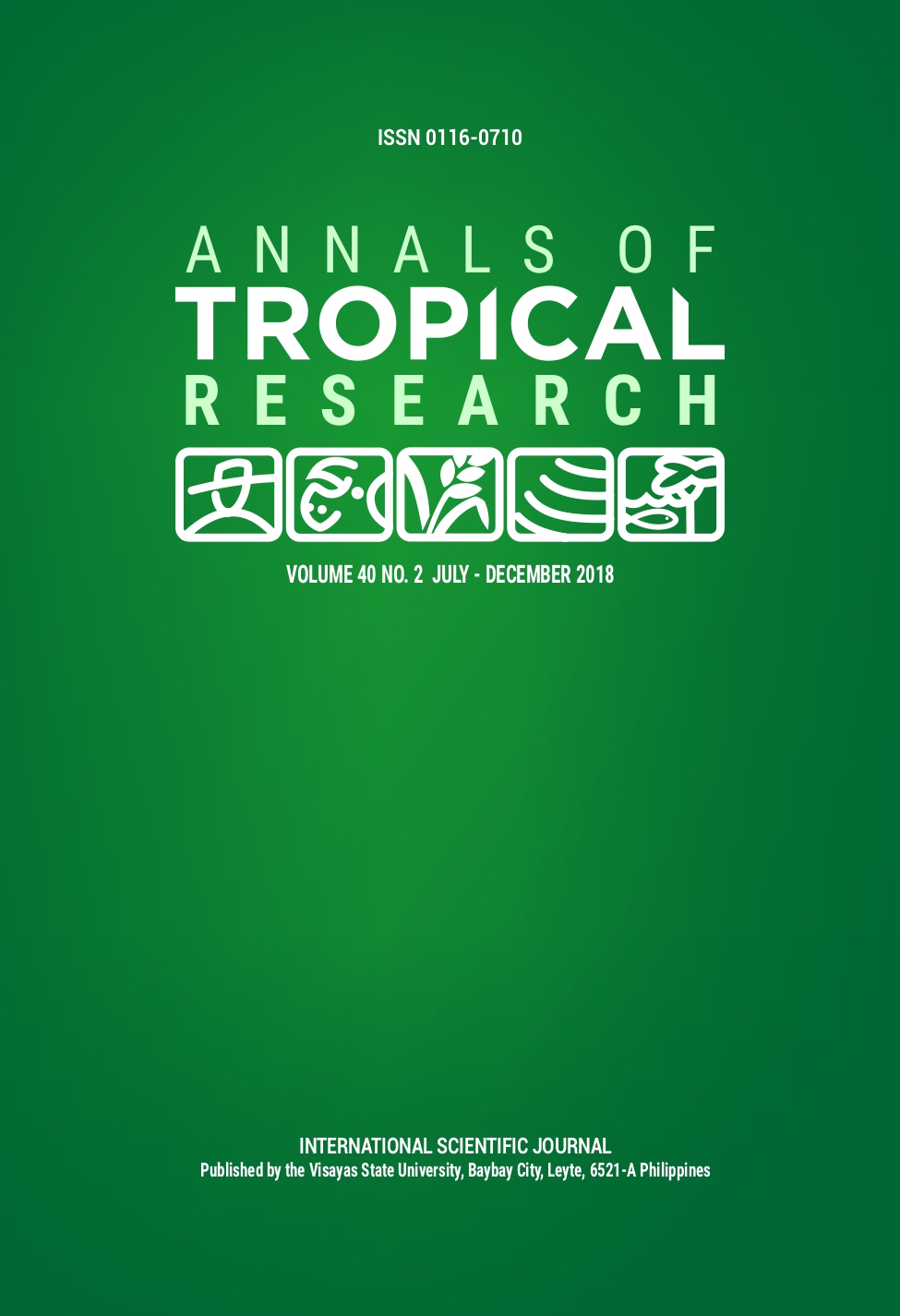Courtship duet between the female and the male Aedes aegypti queenslandensis (Theobald) (Diptera: Culicidae) under laboratory conditions
DOI:
https://doi.org/10.32945/atr4022.2018Keywords:
Aedes aegypti queenslandensis, dengue, wing beat frequency, spherical spreading, phase differenceAbstract
This study aimed to determine the wing beat frequencies and spherical spreading between the female and the male Aedes aegypti queenslandensis during courtship under laboratory conditions. The field-collected larvae and pupae were reared into adult mosquitoes and were morphologically identified. Male and female individuals were coupled. Second generation of live adult mosquitoes were tethered to a stainless wire in their upright position and flight tones produced by their wings were recorded using pressure-gradient microphones. Results showed that the fundamental wing beat frequencies of male mosquitoes (607-1,037Hz) were higher than those of the female (487-660Hz). The different distances between male and female mosquitoes did not influence their wing beat frequencies (p>0.05). Wing beat frequencies of male mosquitoes differed significantly when paired with the female, in all distances between them (p<0.05), whereas those of females, did not differ (p>0.05). Thus, the male Ae. aegypti queenslandensis adjusted and converged with the female’s flight tone. Convergence was restricted to the fundamental frequency for all distances except at the 19-cm distance between them, where convergence happened in the harmonics. Analysis on the spherical spreading on their wing beat frequencies did not differ significantly (p>0.05) in six locations of the microphones relative to the mosquitoes, thus, mosquitoes’ flight tone moved in a spherical manner and that courtship could happen in different directions. Results are relevant for mosquito control by developing an acoustical device to disrupt their courtship.











